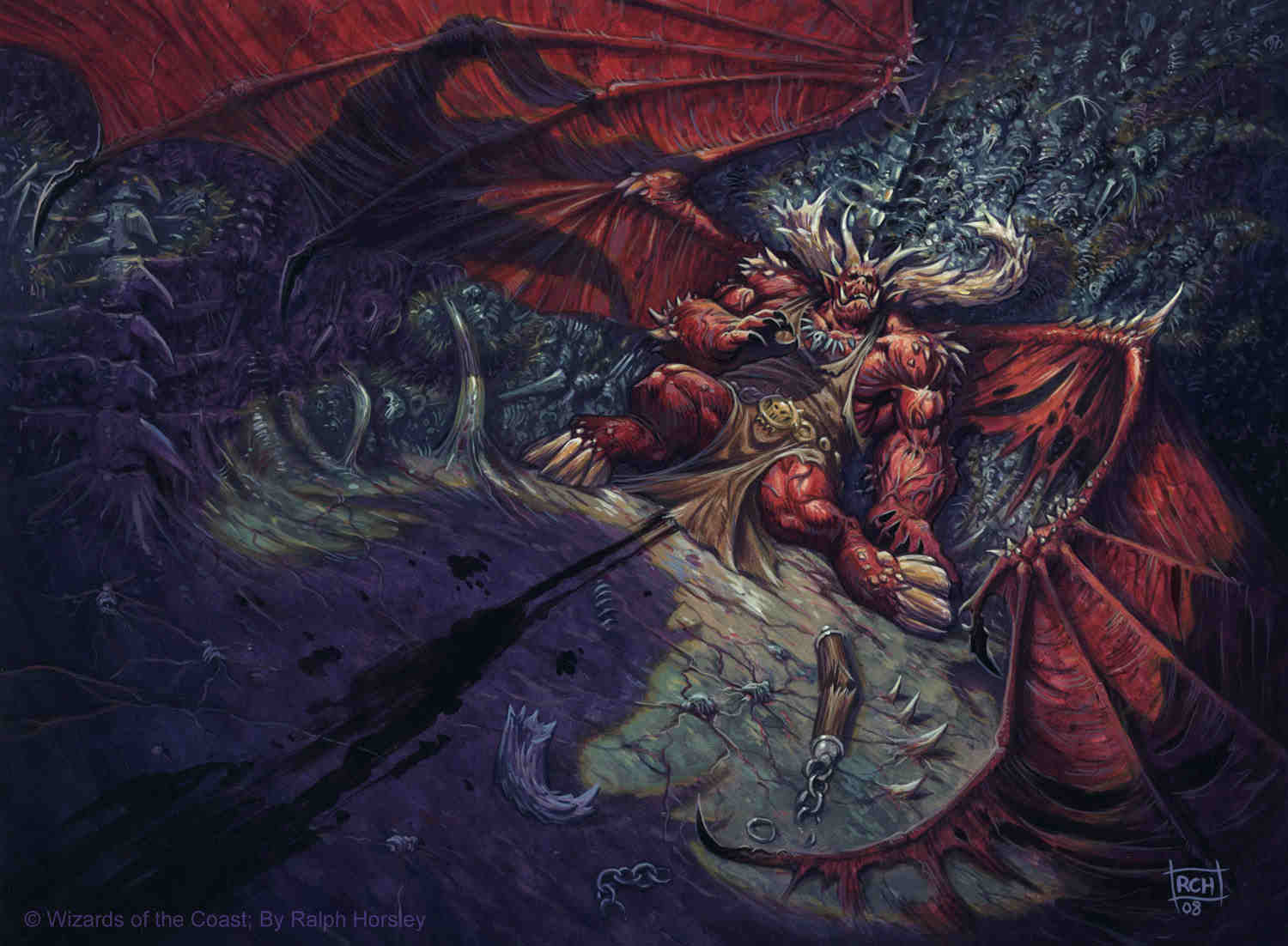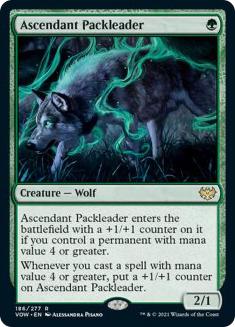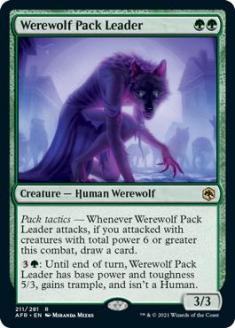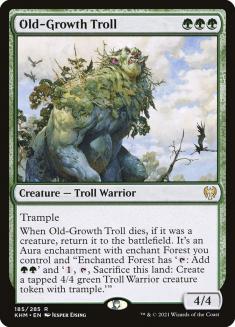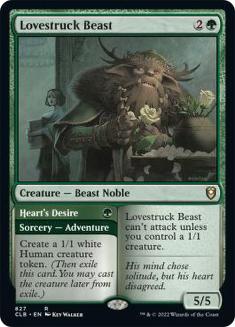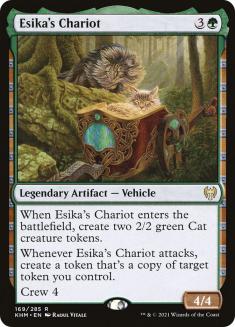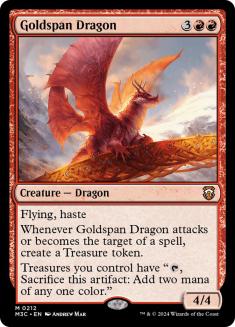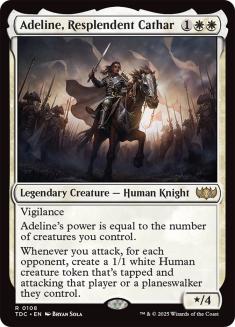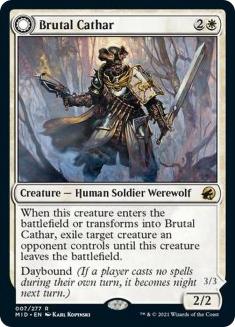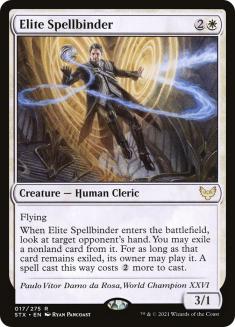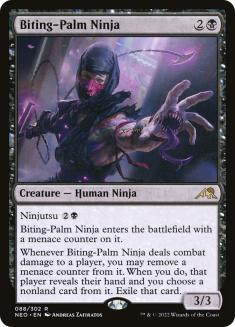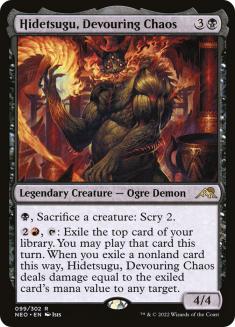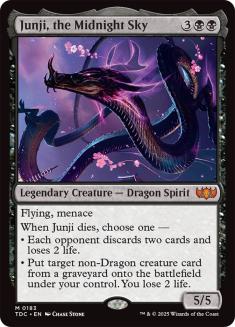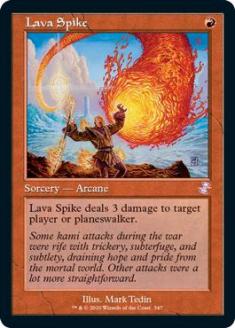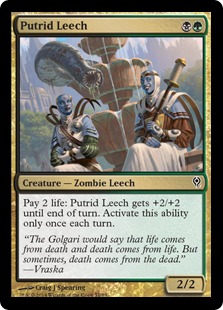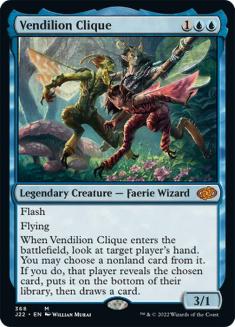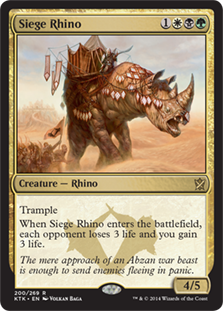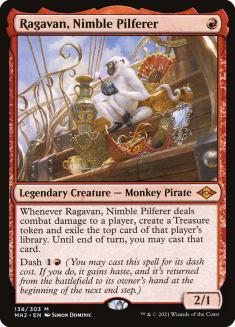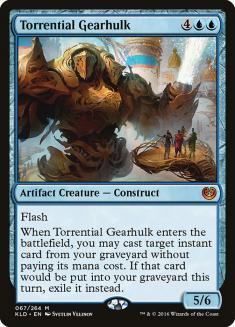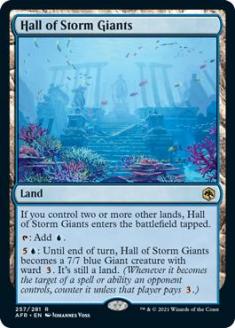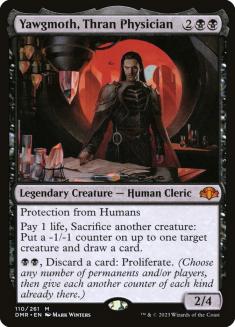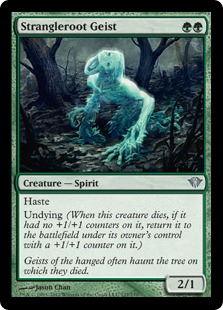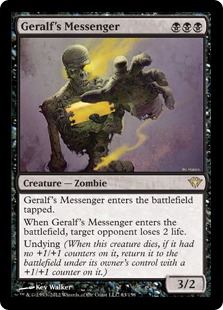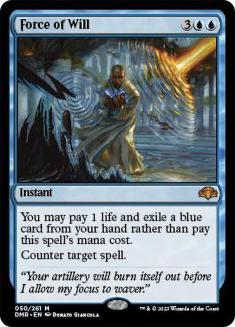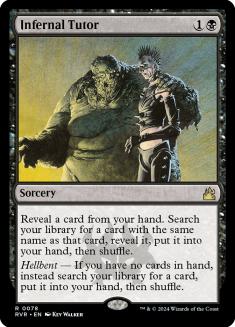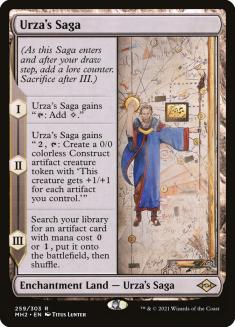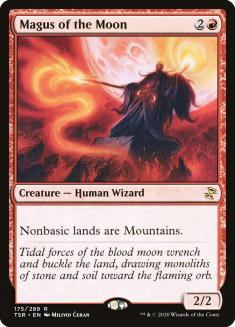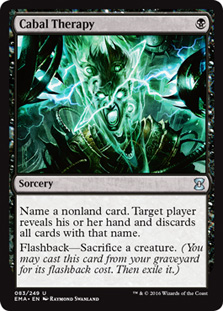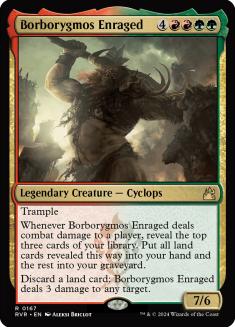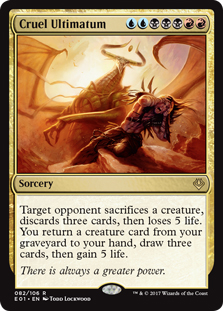One of the secrets of writing Magic content is you take a lot of shortcuts to make it all fit in a readable form. Whether it’s years of your own thoughts or the collective 30 years of ideas from everyone playing the game, you will literally run out of web page to put it on if you don’t play a little fast and loose with lingo and concepts.
But the other secret is a lot of those repeatedly reused concepts aren’t quite the truth. They do their job to sum up the basics, but there are omissions peppered through that close-enough statement.
These are some of the biggest lies behind basic Magic strategy concepts, and how you can start thinking about the game in a better way by seeing the truth behind them.
Lie #1: Mana Curves
The worst decks that everyone builds during preview seasons are midrange. It’s always because they start with the concept of a mana curve plucked right from some Magic strategy book from 1996.
Many of the worst Draft decks make the same mistakes.
Creatures (23)
- 4 Mogg Fanatic
- 3 Siege-Gang Commander
- 1 Burrenton Forge-Tender
- 3 Reveillark
- 4 Figure of Destiny
- 4 Knight of the White Orchid
- 4 Ranger of Eos
Planeswalkers (4)
Lands (24)
Spells (9)

The all-time worst offender of this might be a deck I almost played at my first Pro Tour: Boat Brew. A pile of cards for cards’ sake, a deck so bad it inspired an LSV diss article that killed midrange for years titled “The Meaning of Midrange (and Why It’s Terrible).” There’s a straight line of dominoes from my decision to not play this deck and me writing this article today.
The core of this lie is an impossible design promise. That promise suggests that your one-drops can play against opposing two-drops, your two-drops can pay against their three-drops, and so on up the curve. If they can’t do that, you are looking at half the games where your card is just blanked because of a coin flip where they play first.
Why is this impossible? Most of the time, when things line up like this, it’s because your opponent is playing bad cards instead of good ones. Imagine the flip side. Why would you play a three-drop that doesn’t play well against your opponent’s two-drops? That sounds like a recipe for trading down and dying.
What you should end up seeing are clear break points around powerful cards, where they both blank the cards beneath them and play against the cards above them. A really extreme recent example was Bonecrusher Giant and Lovestruck Beast making small creatures a joke in combat for two years. In the case of those Adventures, you actually saw those cards do so much work that there wasn’t even a window for cards multiple drops below them to find a window or relevance.
Under normal circumstances, the bottleneck here tends to happen in the three-, four-, and five-drop range. Somewhere along those steps, one of the categories of cards just isn’t significantly better than the one below it or is completely blanked by the next option in line, and at that point you just stop playing that cost of card.
There’s a related concept that’s a bit more true of “having too many of a certain drop.” The idea here is that, at some point, you have so many four-drops that you find yourself with multiples all the time. At that point, even if the upgrade to a five-drop is small, if you always get to Turn 5 with your second-best four-drop in hand, why not make a couple of them the arbitrary Dragon or Angel of your choice?
Standard Mono-White Aggro doesn’t do that, though, and we can break down the counterarguments as to why here. First off, the four-drops aren’t even better. The base premise falls apart swiftly when you look at Grand Master of Flowers. The other issue is one-drops. If you have enough cheap cards to fill in the gaps, a slight upgrade is often worse than playing your second big thing after missing a land or making two plays on a turn. No one ever says you have too many one-drops or two-drops because you can just play more spells each turn in those decks.
There’s no rule in Magic saying you have to play a classic mana curve. Once you start getting into the definitively midrange costs of cards, really ask yourself if you’re putting a good card in your deck. If it’s just going to underperform relative to the cards priced around it, just play an actually good card at a different cost instead.
Lie #2: (Just) Your Life Total Is a Resource
“Your life total is a resource” gets thrown around a lot. There’s the “Philosophy of Fire” where you’re talking about converting your cards directly for their life total. There’s taking hits with a control deck to maximize your position and really stabilize a game instead of being stuck behind aggression every turn.
Life totals are a resource, but not just your life total and not just as a path to victory or something tactically spent.
The thing no one ever talks about is that your opponent’s life total is a resource you can leverage, and that’s easily where I’ve gained the most equity in competitive Magic. Whether it was playing Dimir Faeries, Bloodbraid Elf Jund, or Siege Rhino Abzan, there was always a bad matchup or scenario that was easily solved by just killing the opponent.
Right now, this comes up when I watch people play Modern Four-Color Blink (Yorion). There are a ton of matchups where the Four-Color deck can get temporarily stable or ahead, but it’s also relatively light on hard answers and there are a ton of ways for it to fall behind and die from that spot. Maybe your opponent is playing Golgari Yawgmoth; if they draw Yawgmoth, Thran Physician, they take a billion game actions and you lose, but you aren’t dying right now to some Wall of Roots. Or it’s against Azorius Control, and there’s always the fear their next draw is Teferi, Hero of Dominaria into Memory Deluge.
And I’m just sitting there watching, wondering why they aren’t slamming Omnath, Locus of Creation and trying to get to the four-damage trigger to end the game.
This isn’t just a case of “Who’s the Beatdown” and trying to win the game before you lose. Often, you literally get to leverage your opponent’s life total into being a resource they suddenly care about. Let’s take the absolute reductionist scenario, where your opponent is the “Philosophy of Fire.” If you just attack your Boros Burn opponent with Tarmogoyf enough, they will have to Lightning Bolt your creature or block with Monastery Swiftspear instead of converting it into damage to you.
Back to the Golgari Yawgmoth situation, if you just apply full pressure on their setup and life total, you eventually reach a point where they have to start chump blocking. Instead of eroding their life total, you start eroding their raw resources. You have converted damage into a form of tangible attrition.
I once played a Torrential Gearhulk control deck at a Standard Grand Prix, and my plan in half the games was just cast to Gearhulk Turn 6 and start winning the game. My deck was short on ways to counter a planeswalker? A 5/6 beater tends to counter those pretty hard. You see the same patterns with Hall of Storm Giants or Celestial Colonnade in Modern, where if the control deck gets a clean window to land a hit with one of those lands, they can often force a midrange opponent into a losing defensive position. If your opponent has to be the proactive deck in the majority of games against you, it’ll be really hard for them to play as the reactive deck if you force them to be one.
If you want a different analogy of thinking about this: any deck can be a Delver of Secrets deck if you try hard enough.
Lie #3: You Play Around Cards
Tying right back into the idea of playing aggressively to constrain your opponent’s resources, one of the biggest reasons people talk themselves out of these lines is the fear of something going horribly wrong. It feels massively bad to be in a close situation where you aren’t necessarily losing, make a big play, and then immediately get punished and have it all fall apart.
You know what I’ve internalized over the years? It feels worse to loaf around and just lose to normal stuff happening because you played scared.
This probably came from a long time playing Legacy combo decks, and honestly this topic came up because I was looking at What’s the Play scenarios of Legacy Storm against Legacy Izzet Delver decks. Getting your Infernal Tutor hit with Force of Will feels bad. You have nothing, you lose, good day. What’s worse is letting them untap, Ponder, and losing to their hand having a Spell Pierce and a Flusterstorm when you waited to Duress them.
As Modern moves closer and closer to the free spell paradigm, you would do well to adjust this yourself. Yeah, it sucks when your creature gets hit with Solitude when you go for a Colossus Hammer kill, but these control decks just get to take good game actions if you do nothing too.
The one thing that separates Orzhov Hammer (Lurrus) from a lot of other dorky combo decks in Modern is it often does have good things to do instead of running into removal. If you just play Urza’s Saga, your opponent frequently needs to scramble to undo the advantage it provides, or it just baits out the Force of Vigor you were worried about.
But often the “control” decks in Modern can find themselves in situations that are the opposite, where playing around a single card is the quick path to a loss. A recent discussion posed the question of how far you would go to beat Urza’s Saga. If you had Magus of the Moon to beat Amulet Titan, would you also want it against Orzhov Hammer (Lurrus)? You want other tools against Urza’s Saga, right?
My answer was a pretty firm no, and this is a really extreme case of playing around a card only to lose to the rest of their deck. Sure, you stopped Urza’s Saga, but their deck is great at just continuing to produce threatening stuff with Lurrus of the Dream-Den or cards off Puresteel Paladin or really anything they do. Your now-crippled multicolored manabase is going to get stuck matching them one-for-one and probably lose any game where they don’t have multiple Urza’s Sagas. I’m not even sure the excuse that you could Eladamari’s Call for the Magus flies, unless you really can’t find room for a Knight of Autumn or Foundation Breaker instead.
This lie is also the root of why the previous lie is, well, a lie. If you just chill and try to not lose to literal Yawgmoth, your Four-Color deck is not going to have good answers to Strangleroot Geist or Geralf’s Messenger. You will lose to a beatdown crew that wasn’t even good enough for Standard, and that has to be worse and feel worse than doing something that might let you win the game.
There’s another reason people often play around a single card and don’t play around a random amalgamation of plays: thinking about one thing is easier than thinking about five things. People frequently fall into the trap of trying to enumerate all the possible combinations of cards that matter, when generic plays your opponent could make matter. Try to think about the generic plays in generic terms. Will a generic good creature and a generic removal spell completely brick-wall me if I don’t push harder into a sweeper? If yes, then you might want to force them to have it.
If you’re going to play around a specific card, stop and think about playing around the average follow-up turn as well.
Lie #4: You Should Never Tilt
Beyond my ability to ask “what if I tried winning this game” that I’ve spent the last two lies discussing, one of my other talents well applied to Magic has been latching onto key small moments and using those to extrapolate a larger truth.
The details of the events leading up to the statement I made aren’t relevant. It was a Grand Prix, in a city, talking with a person, things happened, I lost a marginal match, the situation was dumb, it was also my fault, whatever.
The big thing seared into my memory is what I said waiting around after the event on the way to the airport:
“It’s kinda nice to let myself tilt off about this right now.”
The “right now” ended up being the key part. On the lists of the most Magic grinder things, being analytical about when it’s okay to be less analytical is pretty high up there.
The problem with tilting isn’t tilting. The problem with tilting is tilting off when tilting off impacts things that matter.
A lot of people struggle with the idea that they shouldn’t tilt off, and for good reason. When you play a lot of Magic, unlikely and unfortunate things happen at inopportune times. Maybe you have reached a level of zen enlightenment where you can see it all as a big session and shrug it all off, or “it’s just a game,” but people wouldn’t be playing tournament Magic if the wins and losses didn’t matter. There’s even too far in the other direction, where many players have hit the point where they anti-tilt so much they wonder why they are playing and lose the drive to win.
Instead of focusing on the act of not tilting, focus on not tilting now if there are still matches to play that matter. You don’t have to be a robot to play your best Magic; you just need a bit of patience.
Knowing the true end point is sometimes the hard part. One of the things that was the hardest adjustments from smaller events to “the big leagues” was keeping yourself in the event once you were eliminated from Top 8 contention. Reid Duke was the master of this for years before he started just making the elimination brackets instead of losing. This might be something lost to time in the new era of Organized Play, but if important matches in the 7-4 bracket ever come up again, make sure you’re mentally ready to play them.
If you have ever been at the obligatory Magic player dinner after an event of any scale, think about how much of it was secretly an exercise in properly decompressing from wins, losses, and everything in the middle. Tilt is fine in the right environment, whether that’s the 0-3 bracket, the drive home, or a table with varying amounts of meat, starch, cheese, and friends.
Lie #5: Any Magic Theory Is Static
I made my statement about how mana curves are a lie, but tiptoed around Standard Mono-Green Aggro, where the “impossible design promise” of your cards being good up the curve just happens. It’s 2022. Don’t we just get good cards in our formats?
I made my comments about playing Four-Color Blink (Yorion) too controlling, but failed to mention one of the players in question was Gabriel Nassif, who wins a hell of a lot because he biases towards the most conservative play in controlling situations. Maybe this is a time when killing your opponent is the right play, but a bunch of other times Nassif played a deck with a bunch of answers and reactive cards that meant the “aggressive” play was establishing control and building a more resilient fortress of answers before winning.
For every time you’re thinking about playing around an average play, there are plenty of times you’re so far ahead you should only consider their best play.
And like I said, when is the next event scheduled where not Top 8ing but doing well is a big deal?
Something I hit on very early in my Star City Games writing career was the idea that Magic success often came in waves, especially in the era of blocks of sets with cohesive themes. A player would have some fundamental grasp on a format shaped by a specific year of design principles, but a few months later something would really change in the format, and they would scramble to figure it out. Even the greatest players would go through these cycles, maybe with a shorter gap between wins.
One of the many things that Mark Rosewater likes to say a lot is that Magic is many games in a trench coat pretending to be the same game. Or something like that, but I like my phrasing.
The hope of learning tidbits of Magic strategy and theory is that 80% of what you know is applicable to what the game is that day. Or maybe that you know the right pattern somewhere and are just waiting to recognize the current game of Magic as that.
The reality is that, even over twenty years of playing competitive Magic and twelve years of writing about it, you just hope to get a little more likely to be right each week and hope to at least be wrong in new and exciting ways.

